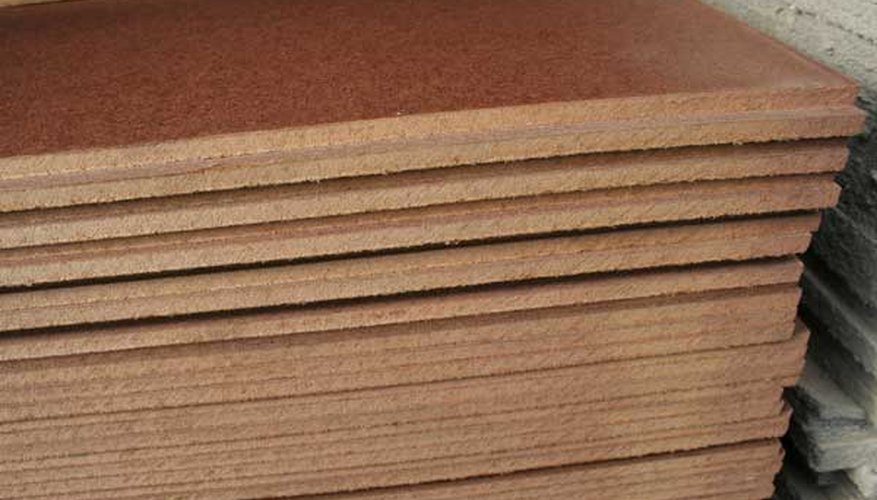Masonite is a particularly cheap type of wood hardboard, and one that is easy to produce and use, which makes it popular among various workers, artisans, artists and builders.
Identification
Masonite is a thin, medium-brown board that is made from steamed wood chips that have been stretched into thin fibres and pressed together with enough pressure to form a solid board. When you look at the grain you can see the strands of fibre, especially on the crosscut section of the board, which is just slightly rougher than the rest. The board is generally very smooth and has no signs of being chemically treated because it is made through all-natural processes.
Features
Since masonite is made from very long fibres of wood, it has a number of features that other wooden boards do not have. For one, the board has a high bending strength, which means it won't snap in pieces easily. That, coupled with a high tensile strength, means that someone will really have to try to break a piece of masonite in order to do so. It is a very dense and stable type of hardwood, and it is prized for these features.
- Since masonite is made from very long fibres of wood, it has a number of features that other wooden boards do not have.
- That, coupled with a high tensile strength, means that someone will really have to try to break a piece of masonite in order to do so.
Function
Because of its smooth surface, masonite is often used to create ping-pong tables and similar devices that require such a surface. Moving companies lay masonite on the floor so that they have a smooth surface to move things across. The same idea is used by theatre companies, who use masonite as temporary flooring on stages. Other uses for masonite include making skateboard decks and wobble boards, and using it in construction for walls, roofs and flooring.
- Because of its smooth surface, masonite is often used to create ping-pong tables and similar devices that require such a surface.
- Other uses for masonite include making skateboard decks and wobble boards, and using it in construction for walls, roofs and flooring.
Significance
Masonite is becoming increasingly popular because it is a green material, meaning that it is produced and created entirely by natural means. Environmentally friendly products are very popular right now, which gives masonite a special place as one of the only eco-friendly hardboards. This makes it very useful in green architecture and construction.
History
Masonite was invented in 1924 by William H. Mason in Laurel, Mississippi, who also created the Methos in which masonite (and some more modern hardwoods) is created. He called this the Mason method. In 1929, five years later, masonite began to be manufactured. It instantly became a popular material and reached the height of its popularity in the 1930s and 1940s. It is not as popular today, though it is beginning to be noticed more for its applications in environmentally friendly practices and construction.
- Masonite was invented in 1924 by William H. Mason in Laurel, Mississippi, who also created the Methos in which masonite (and some more modern hardwoods) is created.
